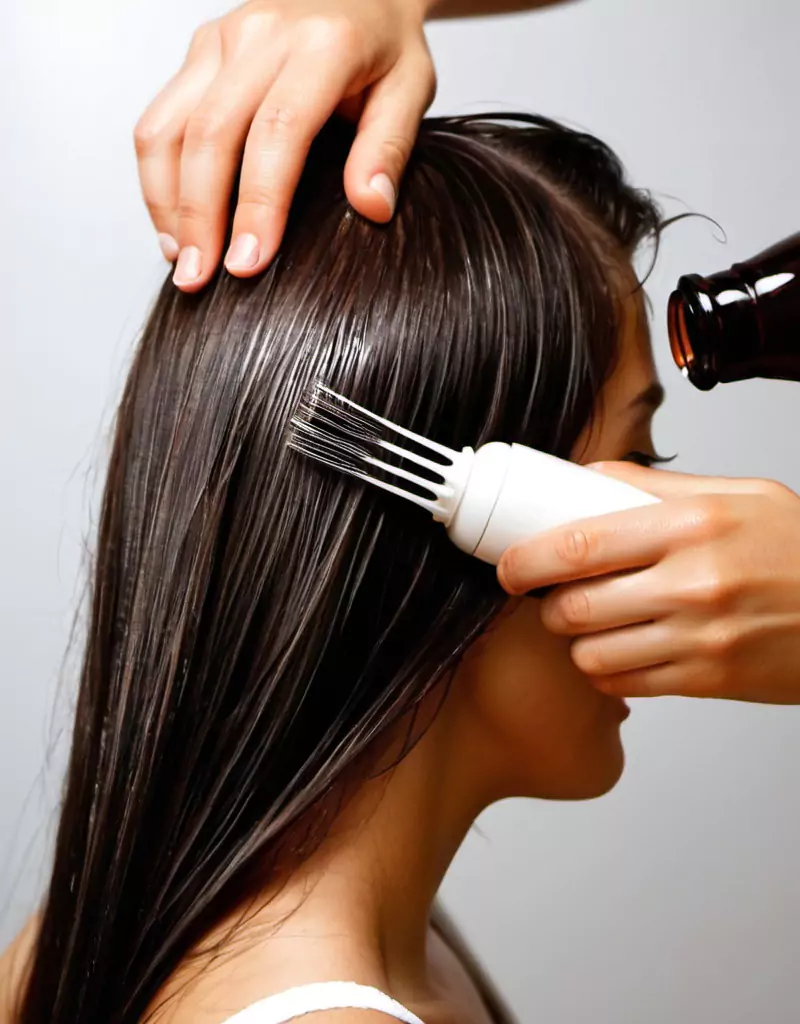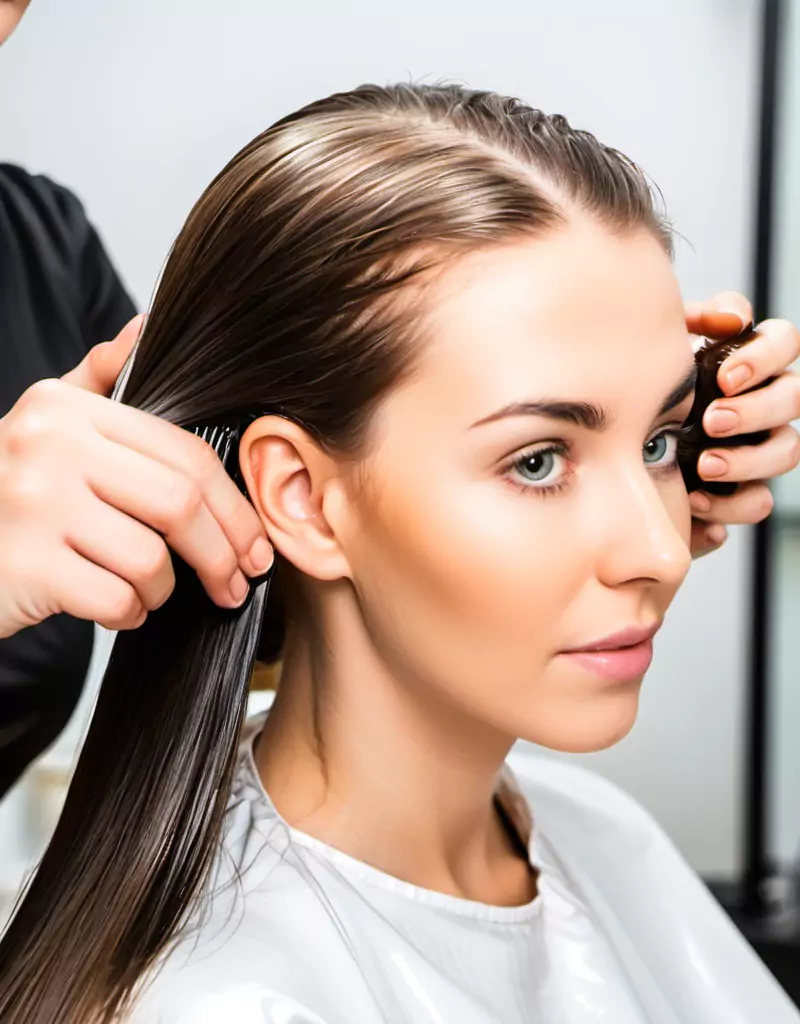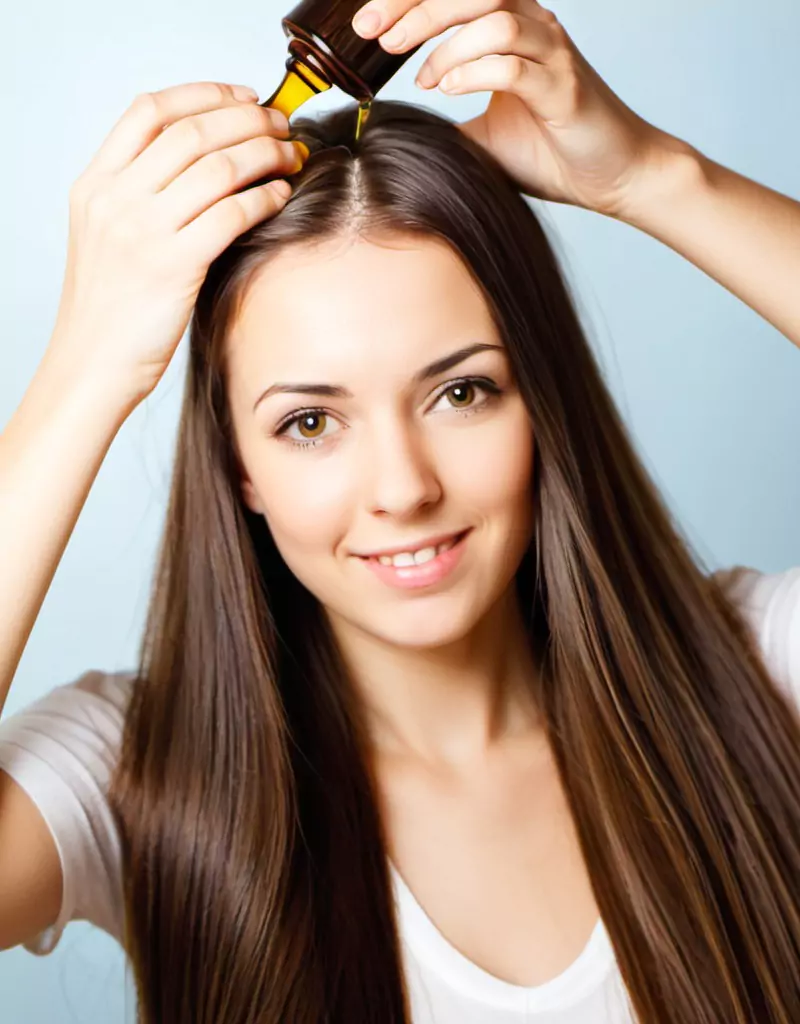Hair oiling at home is a wonderful and relaxing way to take care of your hair, making it healthier and shinier. It’s an ancient practice that many cultures have used for centuries. By applying oil to your hair, you can nourish your scalp, strengthen your strands, and even help with issues like dryness and split ends.
To start, choose a natural oil that suits your hair type. Coconut oil is popular because it’s lightweight and easily absorbed. Olive oil is great for deep conditioning, while jojoba oil works well for balancing the scalp’s natural oils. You can also mix different oils for added benefits.
Before you begin, warm the oil slightly. This makes it easier to apply and helps it soak into your hair better. Once the oil is ready, use your fingers to gently massage it into your scalp. This not only feels amazing but also increases blood circulation, which is good for hair growth. After massaging, spread the oil through the lengths of your hair, focusing on the ends, which tend to be drier.

After applying the oil, let it sit for at least 30 minutes. For an extra boost, you can wrap your hair in a warm towel or shower cap. This traps heat and helps the oil penetrate deeper. When you’re ready, wash your hair with shampoo to remove the oil, and you might want to follow up with a conditioner for extra softness.
Incorporating hair oiling into your routine once a week can lead to noticeable improvements. Your hair will feel softer, look shinier, and be easier to manage. Plus, it’s a simple way to pamper yourself and take a break from a busy day!
See: Benefits of Ozone Treatment for Hair
Want to oil your hair like a pro?
Have you ever wondered whether it is better to do it yourself or trust a professional hairdresser? What is the difference between hair oiling at home and hair oil treatment at the salon? Before you start looking for a hairdresser who knows all the secrets of hair oiling, take a moment to think about this—you are just a step away from being an expert in this field! Make your dreams of beautiful hair come true! Take matters into your own hands.
Today, we will reveal the secrets of professional hair oiling at home and in the salon. What will you choose?
You’ve probably wondered if hair oiling at home can be as effective as salon oil treatments. What is the difference? Which hair oiling method is better, and which one should I choose? Your doubts will disappear today.
What is hair oiling like in a beauty salon?
Hair oiling in the salon has its origins in traditions from the regions of Asia. Almost every salon performs this treatment there. The hairdresser’s task is not only to cover the hair with the appropriate mixture of Indian oils, macerates, and herbs known for centuries.

which have been thoroughly researched and described in the Ayurveda, i.e., the “holy book” of the Indian people. It is a specific hair care ritual that, thanks to the massage of the scalp, relaxes, helps to get rid of worries and anxieties, and has the power to heal.
Hair oiling is a bit more prosaic on other continents; the hairdresser evaluates the appearance and condition of the hair and selects the appropriate oil and the intensity of the treatment. Thanks to scalp massages, subcutaneous circulation is strengthened, and faster absorption of oils is ensured.
Before the treatment, the hairdresser uses special cosmetics that lift the hair scales and clean the strands, allowing the oils to penetrate deeper into the hair structure. Subsequently, he applies oil to the scalp and hair, puts on a plastic cap or a heated towel, and heats the turban with a hair dryer so that the treatment has stronger effects (most often we spend this time under a special hair dryer with a hood).
The oil is left in the hair, depending on its condition (30 minutes on average). After the treatment, it is rinsed, and the hair is washed with a special shampoo that seals the scales and strengthens the shine.
Hair oiling in the salon: effects
The effects of professional hair oiling are usually very satisfactory—the hair is smooth, shiny, and well-groomed. The strands are tamed and lifted from the roots, flexible and full of vigor. This effect is determined not only by the oil but also by a professional massage and a special conditioner or lotion applied after the treatment to increase the shine of the hair.
What is homemade hair oiling?
Hair oiling at home is very similar (the oil is applied to the hair and scalp, left on for a certain time, then rinsed off, and the hair is washed thoroughly). The method of applying the oil to the hair is similar to applying the mask, with the difference that the mask “bypasses” the scalp, and the oil is the most important part of the entire treatment.
Such details make a difference in successful oil care, but we all know well that “the devil is in the details.”. It happens that we do not wash our heads before treatment and apply oils to dry hair (this method will not work if we use a lot of styling cosmetics). We tend to forget about cleaning our hair with special cosmetics or lifting scales. We also sometimes apply the oil inaccurately, so the hair is overloaded and loses its elasticity. The oil applied to the hair is not heated, so its effect is weaker, and we are often confused when choosing the right oil for oiling—the effect depends on luck and not on the real needs of the hair.
Hair oiling at home: effects
The effects of hair oiling can be different, and it all depends on following the simple but basic principles of hair oiling and choosing the right oils. Hair oiling done in the comfort of your home beats treatments offered by beauty salons. With the right hair oil, your hair will be strong, thick, and shiny; its structure will improve; it will stop falling out; and it will grow more.
Become a professional! How do you oil your hair at home?
Would you like to become a hair-oiling pro?
Don’t wait, don’t hesitate, take matters into your own hands—discover some well-known and used rules of hairdressers that will change the effects of your home hair oiling. Your hair will benefit from a treatment more than a visit to the hairdresser! What are the rules?
- Identify the porosity of your hair (take a test available online to correctly determine the condition of your hair and choose the right oil).
- Choose the right oil for your oil hair treatment; it must match the porosity of the hair and be suitable for application to the scalp. The oil must correspond to the condition of the hair (oil for hair with high porosity, for hair with medium porosity, or hair with low porosity—each of the three hair types can be cared for with one of the three Nanoil hair oils).
- Before oiling, don’t forget to wash your hair and scalp thoroughly (exfoliate the scalp and use a cleansing shampoo).
- Give your scalp a gentle massage; it stimulates blood circulation and allows oil particles to penetrate the deeper structure of the hair, all the way to its “heart”—the bulbs.
- Heat-oiled hair: heat activates the oil particles and increases absorption into the hair.
- Rinse your hair thoroughly and wash it with a mild shampoo. Apply a gentle conditioner, e.g., in the form of a spray or foam, which will strengthen the effects of oiling and will not burden the hair (the conditioner can also be based on natural oils; thanks to this property, the hair will gain protection against heat and shine).

Homemade hair oiling: benefits
- You carry out the treatment in the comfort of your home, in suitable conditions, and a nice, relaxing environment
- You can combine hair oiling at home with other cosmetic procedures (take a warm and relaxing bath, apply a face mask, take care of your feet, etc)
- A well-chosen oil is enough for several oil treatments; thanks to this, you will give your hair constant, extreme regeneration and provide care at the highest level
- Regular hair oiling in combination with scalp massage perfectly strengthens and relaxes the bulbs, delays the process of graying and dying of the bulbs, and strengthens the hair from the roots
- Hair oiling at home is very cheap; you save not only money but also time. You decide when and how to do it yourself, and you don’t have to adapt to (often distant) appointments and uncomfortable salon hours
- You can let the hair oils work as you wish (even overnight); unfortunately, no hair salon will ever offer you such a solution
- You can freely change and test the cosmetics used after hair oiling to achieve the best possible effect (you don’t have to use products used in the salon)
Hair oiling in the salon: Are there any disadvantages?
Are there any disadvantages to hair oiling at the salon? There are many of them. Not every salon has a wide range of products suitable for the type (porosity) of your hair. Most often, it is one (dominant) brand of cosmetics—it is not a conscious choice, but the lack of it—and it is this aspect that decides which product you will use on your head.
A hairstylist is often unable to determine your hair porosity after a short consultation, so it’s best to know it before you schedule a salon visit (you can determine the condition of your hair using an online hair porosity test).
In addition, salon hair oiling is easily confused with beautifying and conditioning treatments using oils that neglect an important aspect of the treatment—the scalp. Such treatment does not regenerate the hair, but only conditions and beautifies it. It does not affect the health of your hair.
In addition, hair oiling in the salon is quite expensive; for the same price, you can get a professional natural oil that lasts for several treatments! Visits to the salon must be repeated regularly to bring good results. From an economic point of view, this aspect is also a significant disadvantage of hair oiling for a hairdresser.
Hair oiling at home and in the salon: reviews
Hair oiling in the salon has good reviews; this is a treatment carried out under the close supervision of a professional. The cosmetics used by hairdressers must be of the highest quality, and we’re not just talking about oils but also products before and after oiling. Unfortunately, if we decide to do the treatment once or if we do it at some (distant) time, the effect will not last long. Only regular hair oiling will give the desired results.
Hair oiling at home can garner different opinions; it all depends on the hair, oils, and porosity. The more you know about hair oiling and the better oil you choose, the more beautiful and healthy your hair will look. Fortunately, the rules of hair oiling are not complicated—you can become a professional in this field. Good luck!
DIY Hair Oil
DIY hair oil is a fantastic way to nourish and revitalize your hair without spending a fortune on salon products. Making your hair oil allows you to customize the ingredients to suit your hair type and needs. Whether you have dry, frizzy, or oily hair, there’s a perfect blend for everyone.
To create your DIY hair oil, start with a base oil like coconut, olive, or jojoba oil. These oils are great for moisturizing and can help improve your hair’s texture. Next, you can add essential oils like lavender, rosemary, or tea tree oil for added benefits. Lavender oil can promote relaxation and a good night’s sleep, while rosemary oil is known to stimulate hair growth. A few drops of these essential oils can make your hair smell amazing while providing extra nourishment.

The process is simple: mix your chosen base oil with the essential oils in a small bottle. You can also add other ingredients like vitamin E oil or aloe vera for extra hydration and shine. Once your oil is ready, apply a small amount to your hair, focusing on the ends to prevent split ends and damage. You can use it as a leave-in conditioner or a deep conditioning treatment by applying it before washing your hair.
Using DIY hair oil not only benefits your hair but also allows you to connect with nature and enjoy a little self-care. Plus, it’s fun to experiment and find what works best for you. So why not give it a try? Your hair deserves that extra love, and making your hair oil can be a rewarding experience that leaves your locks looking healthy and beautiful.
DIY Hot Oil Treatment
A DIY hot oil treatment is a great way to give your hair some extra love and care. It’s like a spa day for your locks! This simple process can help make your hair softer, shinier, and healthier. Plus, you can do it right at home without spending a lot of money.
To start, you’ll need some oils. Popular choices are coconut oil, olive oil, or almond oil. These oils are packed with nutrients that can help nourish your hair. First, warm up the oil slightly; you want it to be warm, not hot, so it feels comfortable on your scalp. You can do this by placing the oil in a bowl and setting it in hot water for a few minutes.

Section your hair and use your fingers to gently massage the oil into your scalp and through your strands. This helps improve blood flow and can encourage hair growth. Make sure to coat your hair well, focusing on the ends, which tend to be drier.
After you’ve applied the oil, cover your hair with a shower cap or a warm towel. This traps heat and helps the oil penetrate better. Let it sit for about 30 minutes, or even longer if you can. Then, wash it out with shampoo and conditioner as usual.
Doing a hot oil treatment once a week or every couple of weeks can help keep your hair looking its best. Not only is it good for your hair, but it can also be a relaxing experience that helps you unwind. So, gather your oils and treat yourself to some pampering—you deserve it!

Leave a Reply